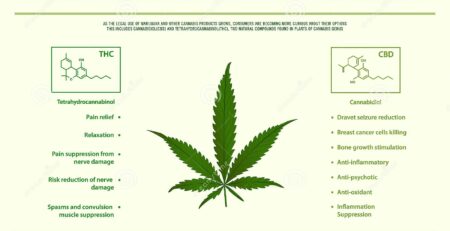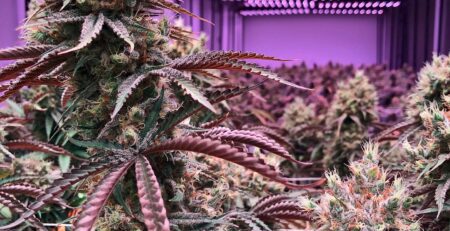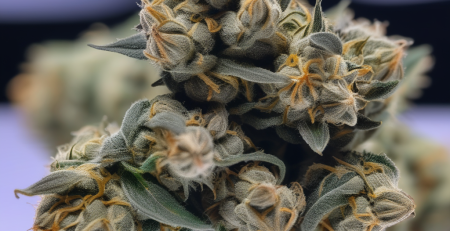The Interplay Between Cannabis and Sleep: A Deeper Insight

As our understanding of cannabis grows, its potential impact on sleep has emerged as a significant area of interest. From ancient traditions using the plant for relaxation to modern studies examining its effects on insomnia, the correlation between cannabis and sleep is both complex and promising.
Cannabis: A Historical Sleep Aid
The relationship between cannabis and sleep isn’t a product of contemporary discovery. For centuries, various civilizations have revered the plant for its therapeutic properties, especially in promoting rest and countering insomnia. Delving into its historical uses provides a fascinating chronicle of cannabis’s revered status as a natural sleep aid.
Ancient Civilizations and Their Cannabis Practices
- Ancient China: As early as 5000 years ago, the Chinese used cannabis in various medical concoctions. The eminent Chinese emperor and herbalist, Shennong, in his classic “Pen Ts’ao Ching,” noted cannabis’s efficacy in aiding ailments, one of which was insomnia. By using the plant in mixtures or consuming it as a tea, ancient Chinese healers sought to exploit its sedative properties.
- Ancient India: The traditions of Ayurvedic medicine, an ancient Indian system of health, often incorporated cannabis to balance physical and mental well-being. Known as ‘Bhang,’ cannabis has been used to induce sleep, reduce anxiety, and even as an anesthetic in certain surgical procedures.
- Greco-Roman Traditions: The Greeks and Romans documented the use of cannabis for various maladies. Dioscorides, a Greco-Roman physician in the 1st century AD, recognized cannabis’s potential in soothing pain and inducing sleep.
- Middle Eastern Cultures: Ancient Arabic pharmacopeia often referenced cannabis as a sleep aid. Notably, Avicenna, the Persian polymath, in his “Canon of Medicine” from the 11th century, detailed the use of cannabis to treat a multitude of diseases, with insomnia being a primary concern.
Why Cannabis? Understanding Its Sedative Properties
Several components in the cannabis plant are thought to contribute to its sleep-inducing effects:
- Cannabinoids: THC (Tetrahydrocannabinol) in particular, known for its psychoactive properties, has historically been linked to promoting sleep. Ancient users, although unaware of the compound specifics, recognized the sedative effects after consumption.
- Terpenes: These aromatic compounds, responsible for the distinct scent of the cannabis plant, might also play a role in its sleep-promoting effects. For example, Myrcene, a prevalent terpene in cannabis, has potential sedative properties.
The Shift to Modern Times
While the ancients primarily relied on anecdotal experiences and traditions, they laid the foundation for understanding cannabis’s potential therapeutic benefits. Today, as the scientific community delves deeper into decoding cannabis’s effects, these historical uses serve as both a guide and testament to the plant’s age-old association with sleep.
The historical tapestry of cannabis as a sleep aid stretches across civilizations, continents, and millennia. Rooted in ancient medicinal practices and carried forth by oral traditions and documented texts, cannabis’s role in promoting restful sleep remains a testament to its enduring therapeutic potential.
At the heart of our body’s ability to regulate various physiological processes, including sleep, lies the endocannabinoid system (ECS). Comprising a network of receptors, enzymes, and endogenous cannabinoids, the ECS acts as a homeostatic regulator, ensuring balance and stability.
- Cannabinoid Receptors: Primarily CB1 and CB2 receptors, these are spread throughout the body, including the brain. Their interaction with cannabinoids plays a decisive role in sleep modulation. For instance, CB1 receptors in the brain influence neurotransmitter release, potentially impacting sleep-wake cycles.
- Endocannabinoids: Anandamide and 2-AG are naturally occurring cannabinoids within the body. Their levels and activities might influence sleep onset and duration.
CBD and Sleep Dynamics
Cannabidiol (CBD), a non-psychoactive cannabinoid, has attracted considerable attention for its therapeutic potential:
- Anxiety and Sleep: CBD’s anxiolytic properties can potentially reduce sleep disturbances and increase overall sleep amounts. By reducing anxiety, CBD may help in creating a conducive environment for rest.
- Pain and Discomfort: Chronic pain can be a significant sleep disruptor. CBD’s potential analgesic effects might offer relief, subsequently promoting better sleep.
- Deep Sleep Regulation: CBD has been observed to increase deep sleep phases, which are crucial for the body’s restorative processes.
THC and the World of Dreams
Tetrahydrocannabinol (THC), cannabis’s primary psychoactive compound, can notably impact the REM sleep phase:
- Reduced Dreaming: Regular THC consumption might lead to a reduction in REM sleep, which can result in decreased dreaming. This effect might benefit individuals suffering from PTSD, who experience nightmares.
- Sleep Induction: THC’s sedative effects can assist in reducing sleep onset latency, particularly in individuals with insomnia.
Cannabis: A Potential Aid for Sleep Disorders
- Insomnia: THC’s ability to reduce the time it takes to fall asleep can be beneficial for insomniacs, offering them quicker access to restorative sleep.
- Sleep Apnea: Early research indicates THC’s potential in stabilizing breathing during sleep, which might assist in alleviating sleep apnea symptoms.
Navigating the Caveats
While cannabis holds promise, it’s crucial to approach its use for sleep with caution:
- Tolerance Build-up: Prolonged and consistent cannabis consumption can lead to increased tolerance, necessitating higher doses for similar effects.
- Dependency Concerns: Even if the physical addiction potential is low, individuals might develop a psychological reliance on cannabis to sleep.
- Sleep Architecture: Chronic cannabis use might alter the natural structure of sleep stages, potentially impacting sleep quality in the long term.
The Shift to Modern Times
From herbal concoctions in earthen pots to state-of-the-art laboratories, the journey of understanding cannabis’s properties has been transformative. While the ancients deciphered the plant’s benefits through trial and observation, the modern age has equipped us with scientific tools and methodologies to probe deeper.
- Scientific Validation: The advent of advanced research techniques in the 20th and 21st centuries has allowed us to validate many of the anecdotal claims from the past. Modern chromatography, for instance, lets us isolate specific cannabinoids and study their effects, providing a clearer picture of how they interact with our biology.
- Legal Evolution: With evolving perceptions and an increasing number of studies highlighting cannabis’s therapeutic potential, many countries and states are reconsidering their stance on its usage. Legalization in several regions has paved the way for more extensive and standardized research.
- Consumer Awareness: The information age has empowered consumers like never before. Today’s individuals can access a plethora of research, testimonials, and discussions on cannabis and sleep, allowing them to make informed decisions based on both historical wisdom and contemporary science.
- Innovations in Consumption: Modern times have seen a diversification in the ways cannabis can be consumed. From vapes to edibles, tinctures to capsules, there’s a method tailored to everyone’s preference, ensuring that the benefits of cannabis can be accessed in various ways.
- Medical Integration: More healthcare professionals today are acknowledging the potential benefits of cannabis, integrating it into therapeutic regimens and suggesting it as an alternative or adjunct to conventional treatments, especially for sleep-related issues.
As we weave through the annals of history, it’s evident that cannabis’s role as a sleep-enhancing agent is deeply entrenched in human culture. But what’s equally intriguing is how modern advancements have reshaped, revalidated, and expanded upon this relationship. The bridge between ancient practices and modern science, built on years of experience and inquiry, underscores cannabis’s consistent and evolving role in our quest for restful sleep. The challenge and opportunity ahead lie in harnessing its benefits responsibly, guided by both past wisdom and current knowledge.















